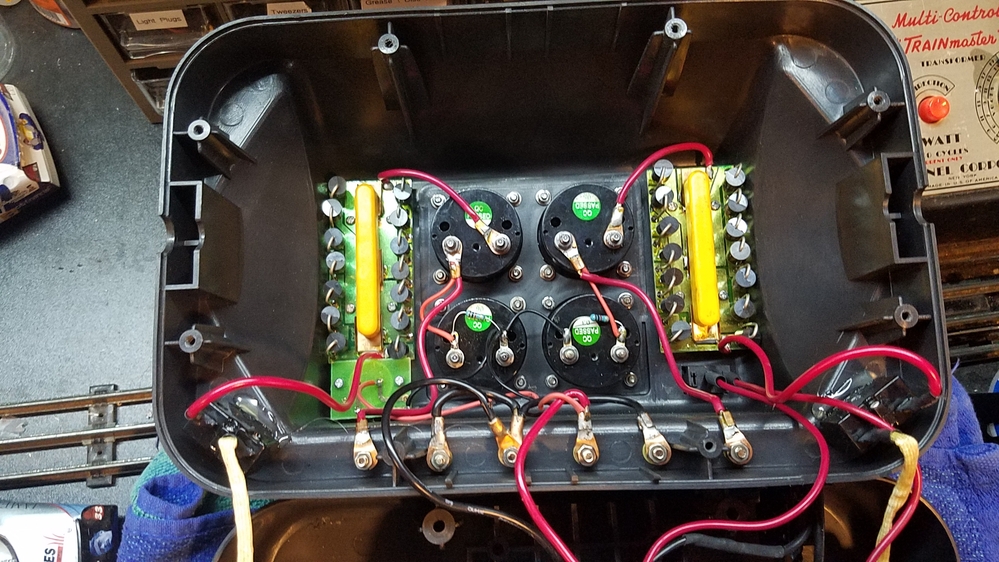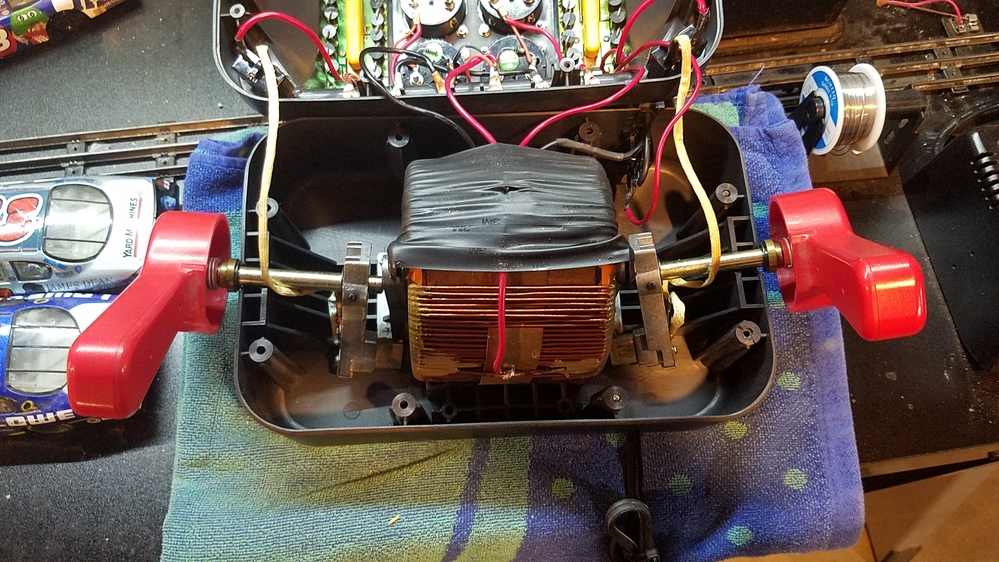In my basement layout [dedicated room, 4 tiers [including the floor as Tier 1!] of 12' X 12' track -- 13 track lines with curves ranging from 031 to 072 and even some mixed bag stuff], my main power transformers include two MRC AH601 270 watters, two venerable 275 watt ZW's [Sidebar: Saw an early Lionel early 50's vintage ad reproduction just recently, are you ready for this, the classic ZW, brand new, $39.00 [!] and the equally classic KW for $31.00 [!] with Lionel boxcars going for less than $3.00 !] and two 190 watt KW's ], anyway, one of the rather fast acting circuit breakers on one of my MRC dual power transformers [5 year MRC warranty as memory serves] suddenly popped up on the left side when one of my older cube box cars had a wheel go off the track [Sidebar: WHY does this ALWAYS seem to happen when the boxcar [or whatever] is at the far end of the layout and the most inconvenient spot to get to! ], anyway #2, I fix the boxcar wheel, go back to the MRC and press down on the circuit breaker button to reset it annnnnnnd .... nothing! No power! The right side of the MRC, fine, the left side, dead! Triple checked everything, nothing! The left side did a Jacob Marley on me and went "as dead as a doornail." And hey, these much newer dual power MRC's are hardly vintage ZW's or KW's so what's with the non responding circuit breaker when manually reset!
The fix: Once again, WHERE is my layout located? The basement. And again, the twin culprits of basement electronics, humidity and electrical oxidation issues. Question: Can an old trick save me a disassembly of the transformer on the theory that the circuit breaker may not be broken and any possible oxidation or "dust gunk spot" is minor ? What's to lose? I cut the power to the transformer and I then took a needle nose pliers and lifted ==UP== on the left side circuit breaker which of course manually placed it in its UP [or "tripped" position] position [while also instantly verifying that the up position still worked via the discernible click] and I then covered the top of the plastic circuit breaker button with a piece of tape while taking my handy-dandy tack hammer [WAAAAITTTT a moment now, stay with me on this!] and giving the button a firm but not heavy "tap" or "bop" if you will and then I repeated the process 4 times. On the 4th "tap" or "bop", I left the button in its normal DOWN position [or NON tripped position], powered up the transformer and the left side power instantly came back to life! It doesn't take much for the breaker to fail due to even a minute spec of dust or even minor oxidation. The "cure" was the tap/bop [lightly!] and it's been working fine ever since! I then ==purposely== nudged a dead slow moving engine wheel off the track, the circuit breaker tripped as expected and popped UP but this time upon manual reset of the breaker by pressing it downwards, all was fine!
Clearly, and no argument whatsoever, opening up the transformer would be in order and a thorough cleaning of its innards and my usual ritual of using brush on Deoxit here and there, but for a fast fix, the tack hammer "cure" worked. Who says taking a hammer to a layout issue has to necessarily be a bad thing? ;-) This too, various "fixes" and even if only temporary in nature can be said to be unorthodox but, and in all fairness, they can work! Indeed, over the years and such things termed "tips and tricks", I read and used various unorthodox "cures" but if they work, well then, where is the argument for at least a temporary fix until the more orthodox fix can take place. --- Doc Tony
Original Post
Replies sorted oldest to newest
















